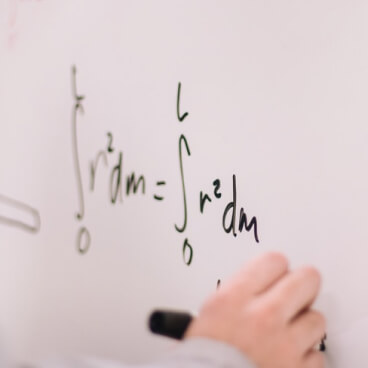Format, Rubrics & Guidelines
Format
Category: High School (HS) and Middle School (MS), separately.
Individual Debate Format (Parliamentary Style)
Overall Format
- Each team consists of 3 members. Each member has a role to play.
- Proposition defines the topic and unless not debatable, the opposition should accept the definition.
- The burden of proof lies with the proposition. The opposition does not have to necessarily prove the opposite rather negate the proposition’s case.
- Each speaker has a role and must be judged based on the fulfillment of that role. Thus, the rubric will have a section that reflects this.
Individual roles of speakers
- 1st speaker defines the topic, which includes defining the key terms and the stance of the proposition, introduces the argument and lays down the structure of the argument. He/She may also argue one aspect/point of the topic.
- 1st speaker opposition will accept or contest the definition. If the opposition decides to contest the definition, they should have a solid reason to do so and to prove why the proposition’s definition is inadequate, inappropriate, unfair or undebatable. Further, the 1st speaker of the opposition should lay down the structure of their argument and lay down their case. He/She must provide rebuttal for the 1st proposition’s argument.
- 2nd speakers on both sides will have to first offer rebuttals to the speakers before them and then lay down any arguments of their own. They should also reiterate their 1st speaker’s points to strengthen the structure of the argument of their team. There will be the bulk of the argument or case.
- In the interest of time, we have decided that this year we will combine the 3rd speaker and the rebuttal speech into one. Thus the 3rd speaker will be concluding the speech for their side. In this case the 3rd speaker opposition will go first. The primary job of the 3rd speaker will thus be to summarize the case. They should ideally summarize both sides, crush the case of the opposite side and consolidate their own side. The 3rd speakers may not bring anything new and there may be no interjections in their speech.
- Each speaker in their own time must give a complete argument for their stance. An argument may not be spread out over two speakers. In other words, each speaker must prove their stance on their own.
- There must be a clear structure to the team’s argument and the division between the two speakers for their points must be clear.
- After the first minute, interjections are permitted by the opposing team. To interject, one may stand and say “Point of information”. The speaker is then free to either accept or reject the request. If acknowledged, the questioner may then ask his or her question; otherwise, he or she must immediately be seated. Repeated interjections are allowed; however, no interjections are permitted in the final minute of a speech.
- Accepting and answering an opponent’s interjections is strongly recommended. This demonstrates the strength of one’s case and self-confidence. However, one is advised against taking too many questions; this drives the speaker off track. The judges should be able to see that the speaker has the command of the floor.
- Order and time given for each speaker are listed in the table below

In-person Event format
All teams are involved in the preliminary rounds. There will be 3 preliminary rounds. The teams will be paired at random for the first round. However, in the second and the third round, the teams will be paired according to their scores to make the debates more balanced and allow for improvement within compatible teams. This will help increase the quality of the debates and help individual teams to improve their performance. The top four teams for each the middle and high school debates will be selected as semi-finalists according to the cumulative scores achieved in the three preliminary rounds. They will not be selected according to how many wins or losses they had. The two Semifinals for each group will also be held simultaneously in two classrooms/break-out rooms based on the preliminary round ranking (see event diagram below).
The topics for the first and second preliminary rounds will be given out before but the third preliminary round will be impromptu. The topic will be given in the main hall and the debaters will be required to begin as soon as they have made it into the assigned rooms. This will allow them about 5 minutes to establish their stance, and work on the structure of their argument and line of reasoning. We believe that the debaters can actually do this and will manage just fine. This will be an extra exercise for them in their mind and will help in the skill-building that this debate tournament is all about.
Each debate will have a best speaker based on the individual score achieved. An overall best speaker will be chosen based on the cumulative score achieved by the individual debaters.
All MS and HS debates are separate events and they will be held in separate rooms simultaneously, except the Finals. The MS and the HS finals will go on back-to-back.
Finals will be held in the main hall.
Virtual Event Format
Virtual tournaments retain an identical format except the tournament is now conducted virtually on Zoom. Teams will debate with their webcams on, in front of the judges and audience.
Four Preliminary Rounds: All teams participate in the preliminary rounds.
Semi-Finals: Advancing to the semi-finals round will be based on the Overall Team Debate Score*, not team wins and losses.
Each debater will receive a score for his or her performance in a debate. The scores for all three debaters will be totaled for the Team Debate Score. Since all the teams may not have the same number of debates because of byes, the Team Debate Scores for each team will be averaged (total of Team Debate Scores / number of debates) to give the Overall Team Debate Score. The teams will be ranked based on the Overall Team Debate Score and the top 4 MS and top 4 HS teams will advance to the semi-finals.
Final: Winners of semi-finals face each other.
Team pairing explained
The preliminary round pairings were created through an entirely random process. Each team was arbitrarily assigned a number. Lists of random numbers from 1 to the number of teams in that age group regenerated. The lists word examined pairwise to determine the pairings. When the age group had an odd number of teams, the final unpaired number would be the team assigned a bye for that round. A team can only have one by in the preliminary rounds.
An example should clarify this process. Let’s assume there are 7 teams. We number the teams 1 through 7:
Mango
Pineapple
Papaya
Grapefruit
Blueberry
Kumquat
Lychee
We generate 30 sequences of the digits from 1 to 7 in random order using a random number generator. We evaluate them in the order they were generated. As an illustration, I have shown the first 8 sequences.
1, 4, 5, 7, 6, 2, 3
2, 7, 6, 1, 4, 3, 5
7, 1, 5, 2, 4, 6, 3 Skip as duplicated bye team
3, 2, 5, 4, 1, 6, 7 Skip as duplicated pairing (1 v. 6)with the second line
3, 2, 6, 5, 4, 7, 1
7, 4, 1, 2, 6, 3, 5
3, 4, 7, 1, 6, 2, 5
5, 3, 1, 7, 4, 2, 6
From the first line we have ROUND 1
1 v 4 or mango v grapefruit
5 v 7 or blueberry v lychee
6 v 2 or kumquat v pineapple
3 bye or papaya has a bye
From the second line we have ROUND 2
2 v 7 or pineapple v lychee
6 v 1 or kumquat v mango
4 v 3 or grapefruit v papaya
5 bye or blueberry has a bye
Line three has 3 (papaya) as the bye team again so we skip entire line
Line four has 1 v 6 (mango v kumquat) which is a duplicate of a matchup round 2 so we skip the entire line.
From line five we have ROUND 3
3 v 2 or papaya v pineapple
6 v 5 or kumquat v blueberry
4 v 7 or grapefruit v lychee
1 bye or mango has a bye
The remaining lines are not used but were generated in case they were needed.
Semifinals Each debater will receive a score for his or her performance in a debate. The scores for all three debaters will be totaled for the Team Debate Score. Since all the teams may not have the same number of debates because of byes, the Team Debate Scores for each team will be averaged (Total of Team Debate Scores / number of debates) to give the Overall Team Debate Score. The teams will be ranked based on the Overall Team Debate Score and the top 8 teams will advance to the quarterfinals for the elimination rounds. The pairings in the elimination round will be based on the ranking from the preliminary debates.

TIE BREAKERS
We will compare tied teams or debaters using the following sub-scores:
Subtotal of the Logic & Relevance plus Refutation & Clash
Refutation & Clash scores
TBD
Rubrics
Note: Subject to Change – Please contact debate@mafiq.org for the current format
Scoring Guidelines

Rules
*Please be respectful to everyone, including fellow competitors. *If you need to enter or exit a room, please wait to do so in between presentations, as to be respectful to the presenter. *Judges are not permitted to open or close doors, so that they may focus on the competitor’s presentation without distraction. *Participants that are waiting for their turn must remain silent. *Do not distract judges, the presenter or audience. Parents are not permitted to raise questions about the judging during the event. Any dispute must be submitted to essays@mafiq.org in writing Jazakum Allahu Khairun for your cooperation!

Fine Arts
Giving wings to the artists who’d like to take it up as a career or just a hobby. Our students are trained by professionals who help them develop, learn and polish their skills while at school.

Humanities
The study of ancient and modern languages, philosophy, history, and more. We take pride in offering top humanity courses from a dedicated and trained staff.

Science
The study encourages scientific reasoning, discoveries and inventions. Great teachers and well-equipped laboratories help students explore, discover and experiment new things under the best supervision.

Mathematics
Understanding the game of numbers and logic to solve real world problems. Learn mathematics from scholars and university toppers who not make it interesting, but also fun to learn.
